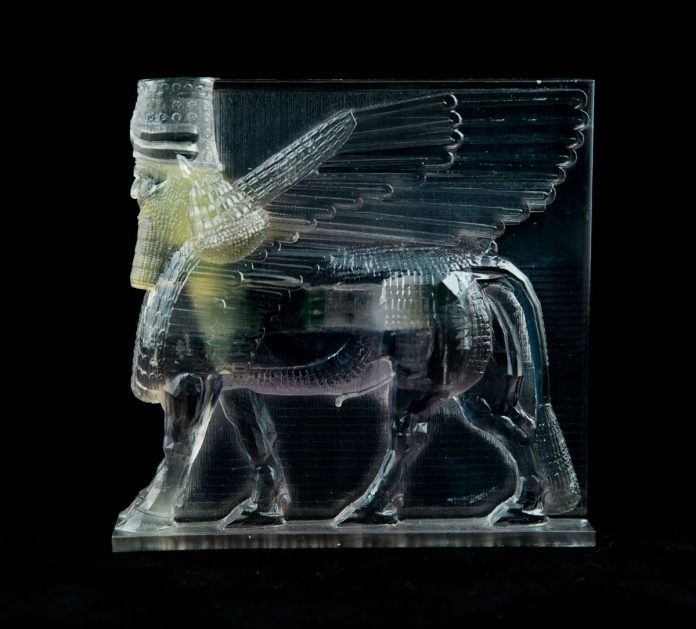https://frieze.com/article/ground
In February 2015, fighters from the so-called Islamic State of Iraq and Syria (ISIS) staged a series of iconoclastic destruction ceremonies for their attendant camera crews in and around Iraq’s Mosul Museum, in a territory the group had occupied for almost a year. The video footage, widely spread over social media and intermingled with statements condemning the ‘idolatrous’ objects, showed fighters methodically destroying nearly 3,000-year-old artefacts from the Assyrian empire and the ancient city of Hatra with sledgehammers, drills and stone-cutting saws. These included one of the finest Assyrian winged lamassu, which flanked the Nergal Gate in Nineveh, and a renowned Hatrene royal sculpture of King Uthal.
Amid the global condemnation that followed, Iranian-American artist Morehshin Allahyari started work on her project ‘Material Speculation: ISIS’ (2015–16). Building on her existing interest in archiving and 3D printing as tools for ‘both resistance and documentation’, she began compiling visual data with the aim of reconstructing some of the artefacts that had been destroyed. After communicating extensively with former Mosul Museum staff who had managed to escape ISIS’s occupation of the city, the artist focused her attention on 12 artefacts from the museum’s former collection that had succumbed to the attack.
Analysis: This article outlines the amazing uses of 3d printing. ISIS had destroyed all these relics and they are able to be brought back to life through 3D scanning and 3D printing. It Shows how detailed 3D scanning can be as well as its is able to recreate works of arts in high detail like no human could.




